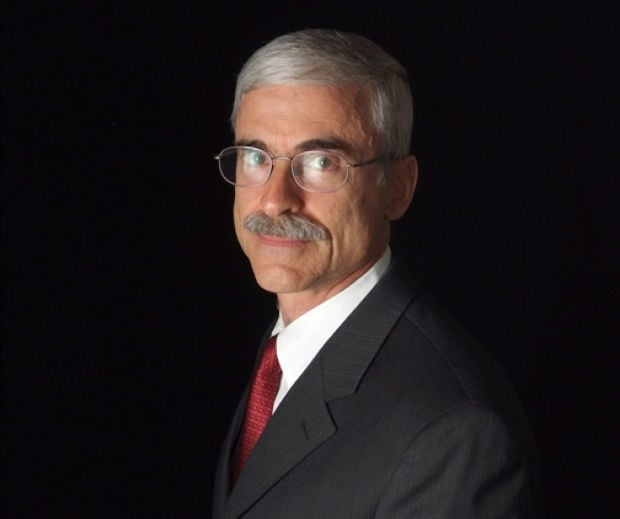As regular readers know, the Republican governor of Wyoming, Matt Mead, last year wrote to the federal government to begin exploring the possibility of setting up a refugee resettlement program in the only state in the nation wise enough to stay out of it completely for over 30 years.
A political firestorm is underway in the state now over whether or not the state should proceed with the US State Department, the US Department of Health and Human Services (Office of Refugee Resettlement), and a Lutheran contractor to begin bringing refugees to Gillette and/or Casper, Wyoming. See all of our previous posts on the controversy by clicking here.
The feds and the contractors need Wyoming because they are reaching a saturation point in many locations around the country. “Pockets of resistance” have developed.

One of the leading critics of the program, Don Barnett, has penned this piece published in the Casper Star Tribune yesterday so Wyomingites have more facts before they leap into a contract with the federal government and a federal contractor (emphasis is mine):
Refugee resettlement was once the calling of true sacrificial charity and the work of private sponsors who invested their own resources. Today, it is the work of federal contractors who have no responsibility a mere 3-4 months after the refugee has arrived.
Traditional sponsor duties have been replaced by access to all forms of welfare upon arrival for refugees and an opaque stream of grant money from seemingly every government agency except NASA.
In recent years up to 95 percent of the refugees coming to the U.S. were referred by the U.N. High Commissioner for Refugees or were the relatives of U.N.-picked refugees. Until the late 1990s, the U.S. picked the large majority of refugees for resettlement in the U.S.
Considering that the refugee influx causes increases in all legal and illegal immigration as family and social networks are established in the U.S., the U.N. is effectively dictating much of U.S. immigration policy.
A network of non-governmental organizations (NGOs) working with the U.S. State Department “selects communities where refugees will live” according to a 2012 GAO report, “Refugee Resettlement — Greater Consultation With Community Stakeholders Could Strengthen Program.”
They don’t place refugees in D.C. where the NGOs have offices which lobby for more refugees and money. They don’t place refugees in Delaware, home of Joe Biden, co-sponsor of the 1980 Refugee Act which defines the program we have today.
The GAO report is critical of refugee contractors and how they place refugees in local communities across the U.S., noting of the resettlement contractors “few agencies we visited consulted relevant local stakeholders, which posed challenges for service providers.” The report found that “… most public entities such as public schools and health departments generally said that agencies notified them of the number of refugees expected to arrive in the coming year, but did not consult them regarding the number of refugees they could serve…”
Lutheran Family Services Rocky Mountains, the affiliate proposed for Wyoming for Lutheran Immigration and Refugee Service (LIRS) the fourth largest refugee contractor in the nation, takes this penchant for operating in secret to the max. According to notes from a February 2014 board of directors meeting the process of selecting resettlement sites in Wyoming has been “complicated by both the state and a private citizen advocate providing media availability to a local paper. Media coverage at this stage is potentially damaging to the success of the overall process…”
There is a reason for the secrecy.
The program places significant unfunded costs on state and local taxpayers in the form of social services which must be provided.
According to the latest data available, a federal study of refugees who have been in the country 5 years or less, the unemployment rate for refugees was 21 percent compared with 9 percent for the U.S. population in 2010. Twenty-six percent were dependent on cash assistance, 63 percent were in the food stamp program and 48 percent were in Medicaid or short-term federal Refugee Medical Assistance. The federal welfare program SSI is a good indicator of long-term welfare dependency rates. It is generally a lifetime entitlement and usually includes Medicaid and other social services. The federal study of arrivals over the previous five years found an 11.6 percent rate of usage – about 2.5 times the national average.
Most of this cost is borne by the federal taxpayer, but programs such as Medicaid have state cost components as well.
There is even secrecy in the meaning of official language used in the program. For instance, it will be claimed – and the media will report – that refugees are “self-sufficient” in some amazingly short period of time. But as officially defined, refugees are considered “self-sufficient” even if they are living in public housing, receiving Medicaid and Food Stamps. They can receive cash assistance from local, state and federal sources, such as SSI. Only TANF disqualifies one from being “self-sufficient.”
Then there is the money racket. As a state refugee coordinator notes in the 2012 GAO report, “local affiliate funding is based on the number of refugees they serve, so affiliates have an incentive to maintain or increase the number of refugees they resettle each year rather than allowing the number to decrease.”
Refugee resettlement is very profitable for the non-profits.
At the point of his recent retirement the CEO of Lutheran Social Service of Minnesota, another resettlement affiliate of LIRS, was making $441,767 a year in salary and benefits – almost all taxpayer-supplied.
It is time to bring this program out of the shadows.
Don Barnett is a fellow at the Center for Immigration Studies in Washington, D.C.
Editors note: If you’ve had experience with the refugee program where you live, please take a few minutes and comment to Mr. Barnett’s opinion piece so that the citizens of Wyoming have all of the facts before they get into something they will never be able to get out of!
